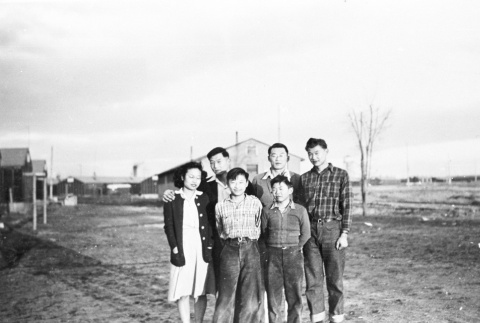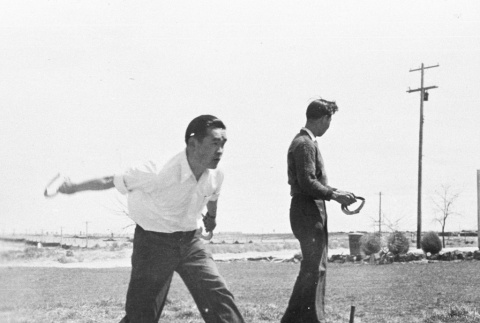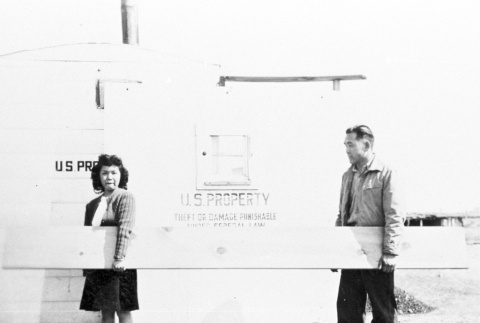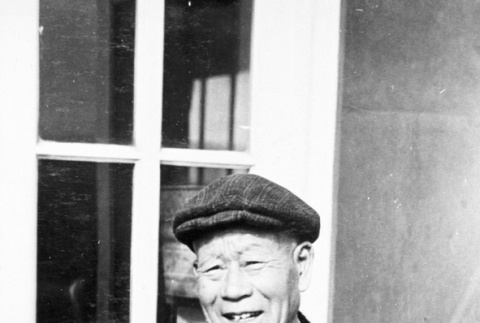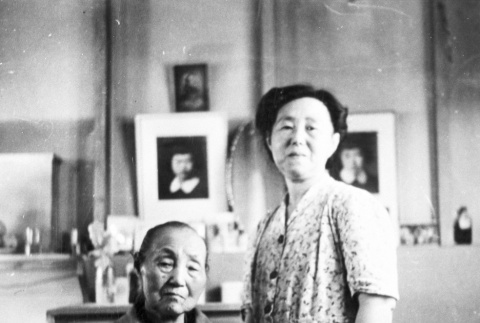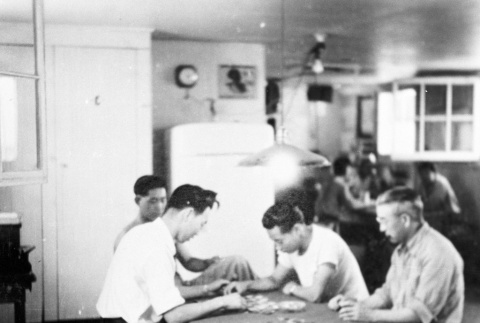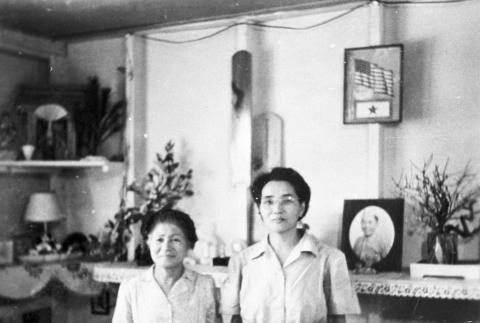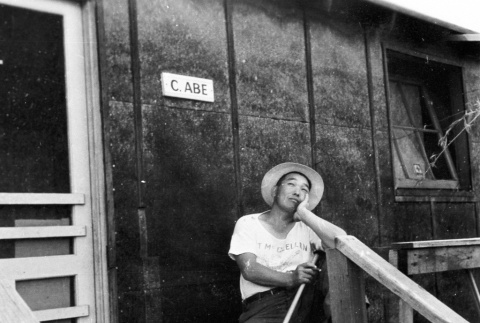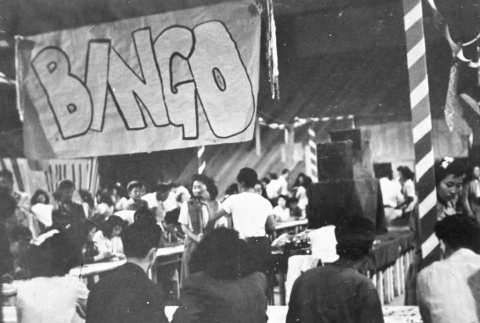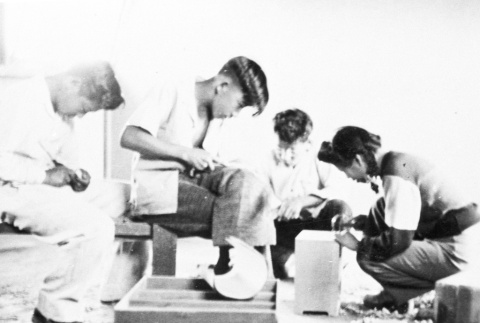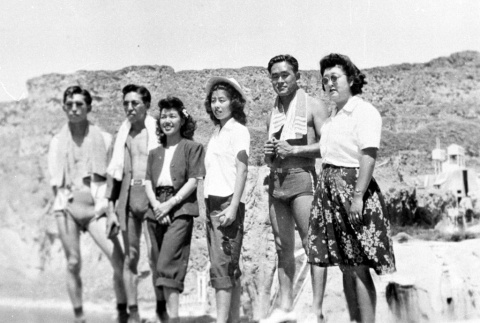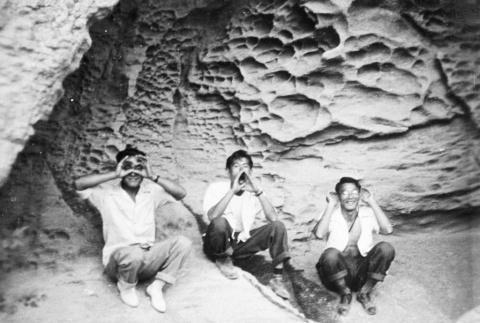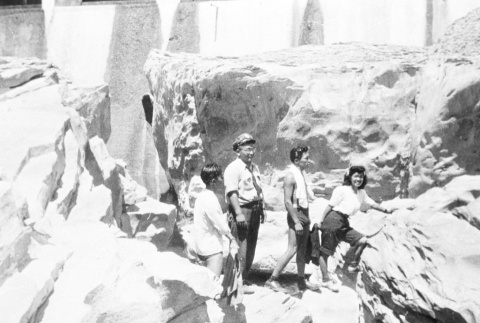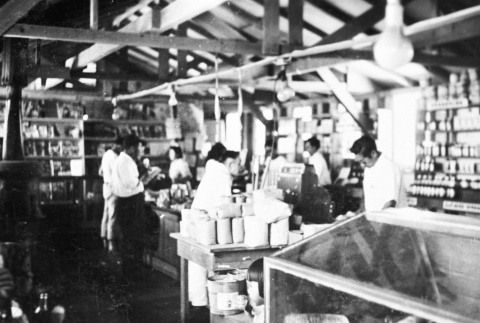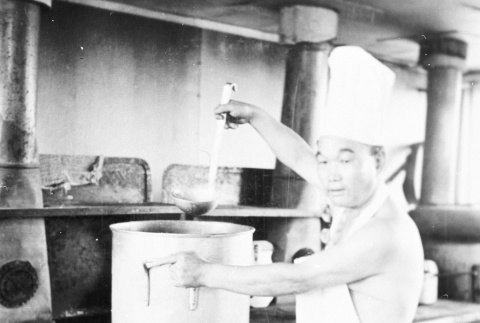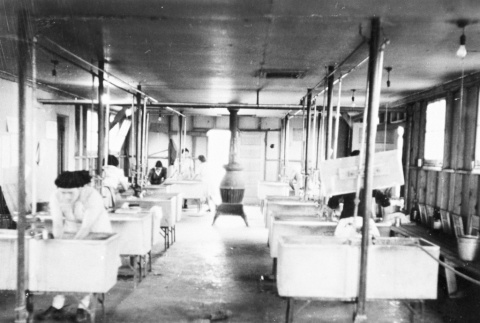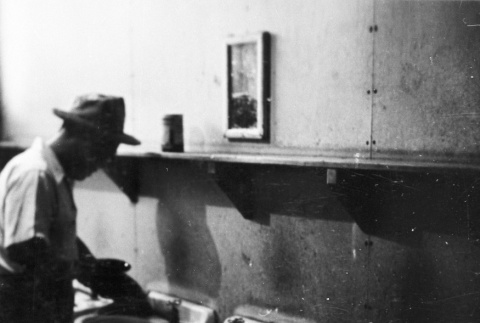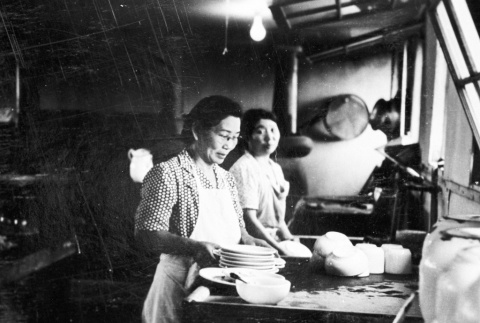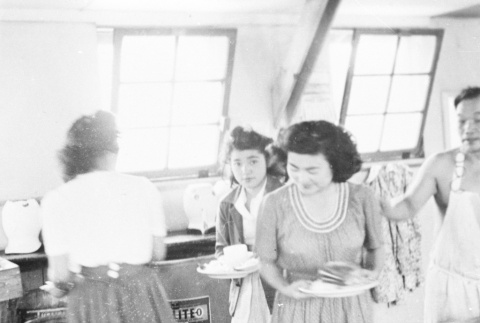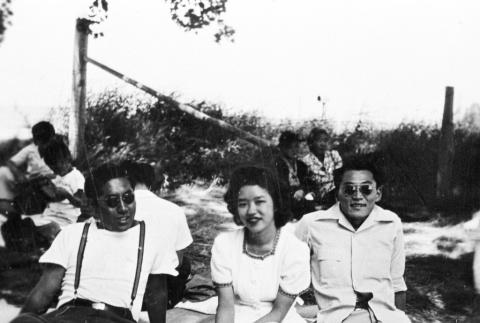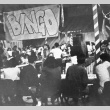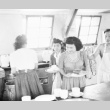Mitsuoka Collection ddr-densho-15
120 items
120 items

img
Family in camp (ddr-densho-15-53)
Ben Ikeda is second from left and his brother, Robert, is next to him. To the far right is their youngest brother, name unknown.
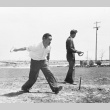
img
Japanese Americans playing horseshoes (ddr-densho-15-54)
Norio Mitsuoka (left) and (first name unknown) Hikida playing a game of horseshoes.
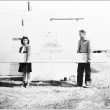
img
Japanese Americans carrying plywood (ddr-densho-15-55)
Yoneko Tanaka (left) and Norio Mitsuoka carry away lumber to make furniture.
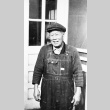

img
Japanese American with light meter (ddr-densho-15-57)
Norio Mitsuoka, twenty-seven years old, prepares to take a picture. Although cameras were among the items confiscated from Japanese Americans after Pearl Harbor, Mitsuoka was allowed to have a camera in camp in 1944.
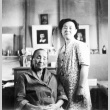
img
Two Japanese Americans in their barracks apartment (ddr-densho-15-58)
Grandma Yorozu, who at eighty-four years of age was one of the oldest Japanese Americans at Minidoka, and Fusa Yorozu inside their barracks apartment.
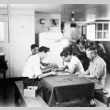
img
Japanese Americans playing cards at the fire station (ddr-densho-15-59)
This is the interior of Fire Station Number 1. Left to right: (first name unknown) Hikida, unidentified, Yoshio Akada, and Mr. Sano. The fire station was one of the few buildings with a refrigerator. Mr. Sano owned the bathhouse underneath the Panama Hotel in Seattle, Washington, before World War II.
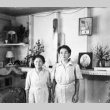
img
Two Japanese Americans inside barracks (ddr-densho-15-60)
Mrs. Shioshi (left) and Mrs. Odoi inside camp barracks. Both had sons in the military.
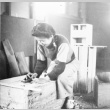
img
Japanese American making furniture (ddr-densho-15-63)
Barracks apartments were furnished only with a coal-burning stove and a cot. Consequently, many camp inmates made furniture from scrap lumber.

img
Japanese Americans at Shoshone Falls (ddr-densho-15-64)
Japanese Americans from the Minidoka concentration camp visit Shoshone Falls. This area was a popular destination for camp inmates on a day pass. Left to right: Yoneko Tanaka, Fusako Shimizu, Ayako (last name unknown), and Lily Hori.
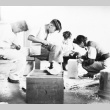
img
Japanese Americans making furniture (ddr-densho-15-65)
The barracks apartments that housed Japanese Americans contained cots and a coal-burning stove, but no other furniture. Camp inmates often made their own furniture and other accessories from scrap lumber.
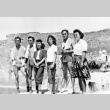
img
Japanese Americans at Shoshone Falls (ddr-densho-15-66)
These Japanese Americans enjoying a day at Shoshone Falls near the Minidoka concentration camp were allowed to leave the camp on an approved day pass. Left to right: Tom (last name unknown), Ted Kamada, Yoneko Tanaka, unidentified, Norio Mitsuoka, and Kiyoko (last name unknown).
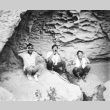
img
Japanese Americans at Shoshone Falls (ddr-densho-15-67)
Left to right: Norio Mitsuoka, Tom (last name unknown), and Robert Ikeda at Shoshone Falls, near the Minidoka concentration camp.
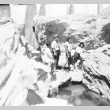
img
Japanese Americans at Shoshone Falls (ddr-densho-15-68)
Shoshone Falls was an easy day trip for Japanese Americans from the Minidoka concentration camp. Camp inmates were allowed to leave Minidoka on short excursions with approval from camp administrators. Left to right: unidentified, unidentified, Ted Kamada, and Yoneko Tanaka.
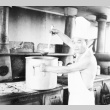
img
Japanese American preparing meal (ddr-densho-15-70)
Jim Shiga, well-known for his cooking skills, prepares a meal in the camp's warehouse kitchen.
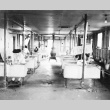
img
Laundry room (ddr-densho-15-71)
The Minidoka concentration camp was divided into thirty-six blocks, each with its own communal laundry facility, like the one shown here.
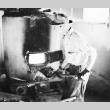
img
Japanese American shoveling coal into a heater (ddr-densho-15-72)
Camp inmate shoveling coal into the block's central heater, which will warm water for the laundry and bath facilities.
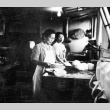
img
Japanese Americans washing dishes (ddr-densho-15-74)
Issei washing dishes inside the camp's warehouse kitchen.


img
Japanese Americans at a picnic (ddr-densho-15-78)
Left to right: Tak Hori, unidentified, and Robert Ikeda.
